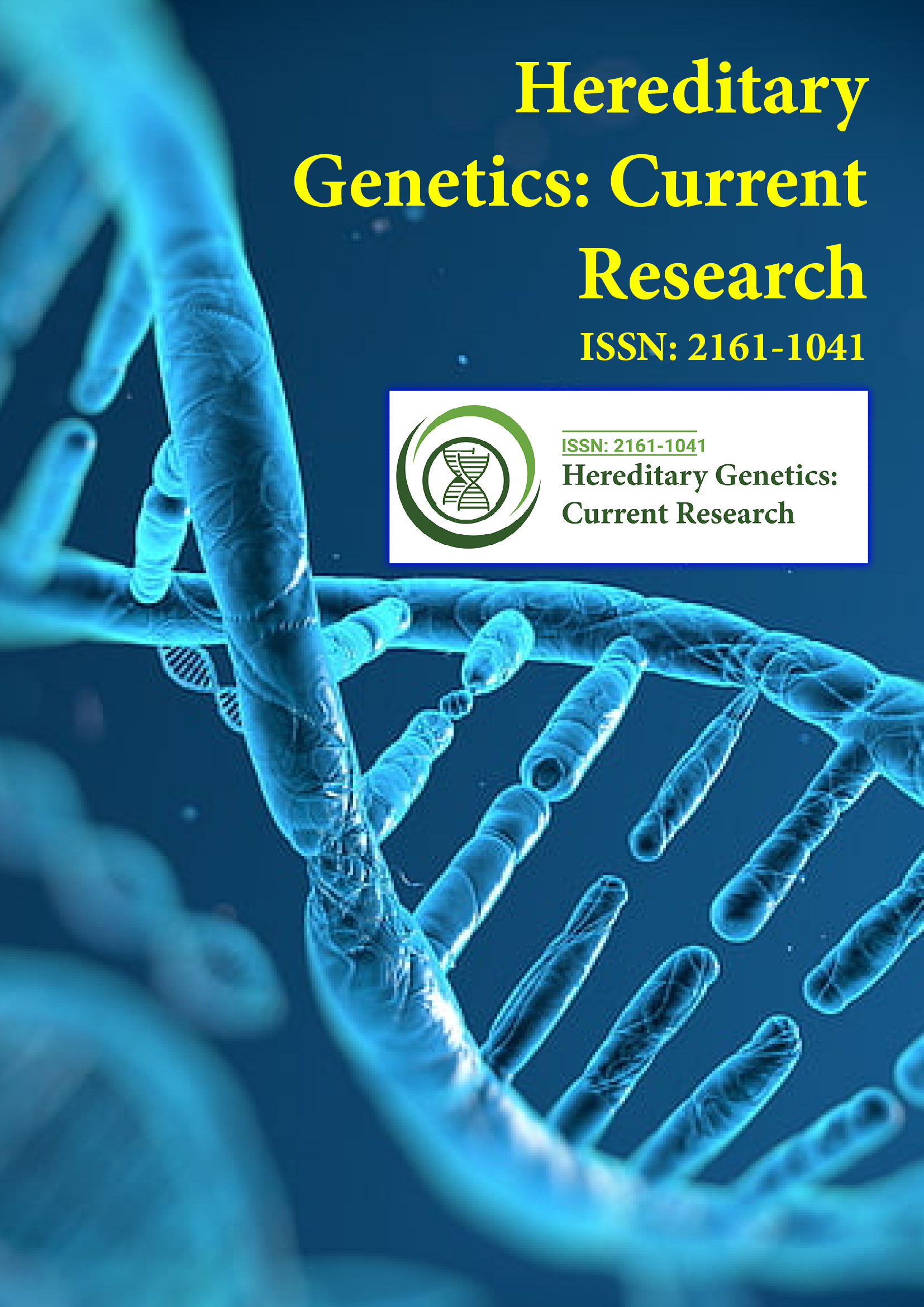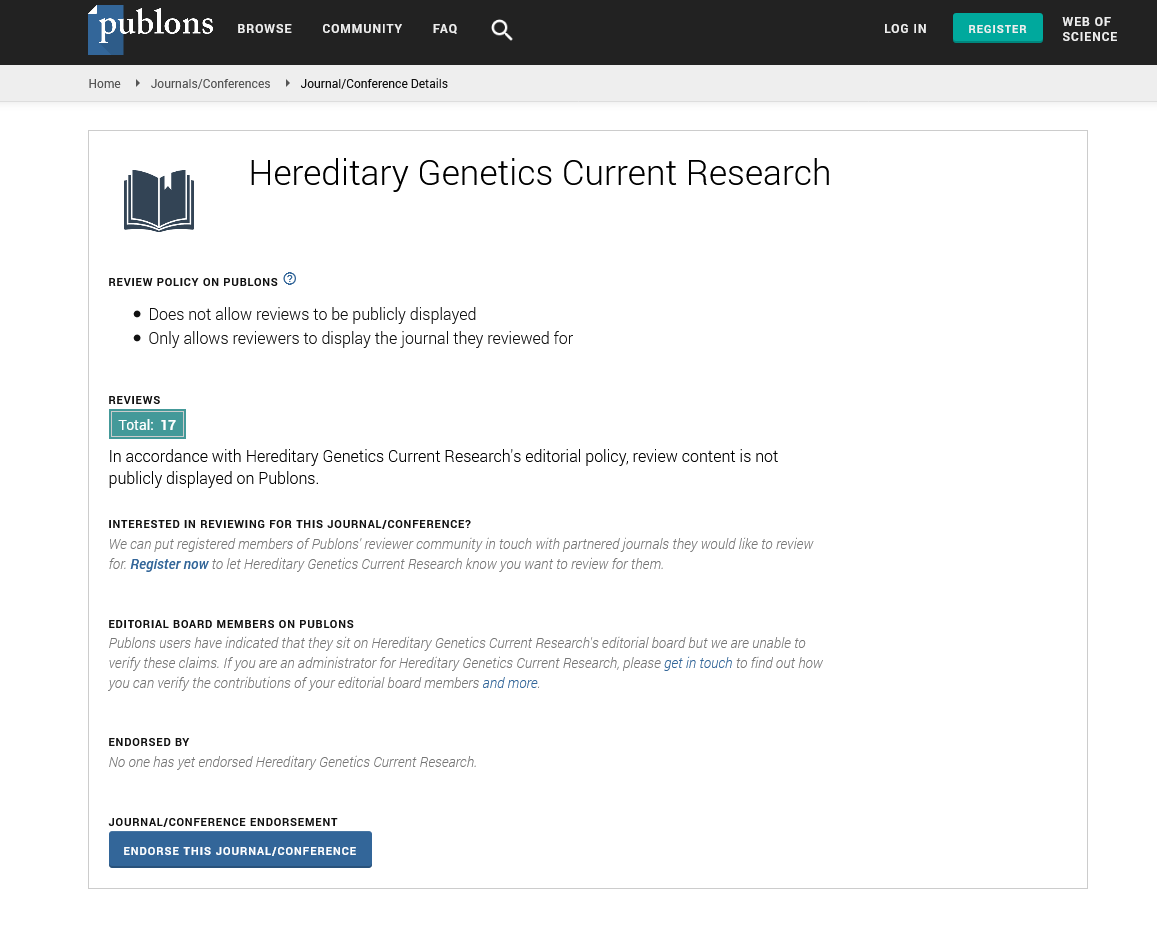Indexed In
- Open J Gate
- Genamics JournalSeek
- CiteFactor
- RefSeek
- Hamdard University
- EBSCO A-Z
- NSD - Norwegian Centre for Research Data
- OCLC- WorldCat
- Publons
- Geneva Foundation for Medical Education and Research
- Euro Pub
- Google Scholar
Useful Links
Share This Page
Journal Flyer

Open Access Journals
- Agri and Aquaculture
- Biochemistry
- Bioinformatics & Systems Biology
- Business & Management
- Chemistry
- Clinical Sciences
- Engineering
- Food & Nutrition
- General Science
- Genetics & Molecular Biology
- Immunology & Microbiology
- Medical Sciences
- Neuroscience & Psychology
- Nursing & Health Care
- Pharmaceutical Sciences
Opinion Article - (2023) Volume 12, Issue 1
Gene Expression Profiling and Implications of Clinical Applicability in Rheumatic Arthritis
David Lyle*Received: 03-Mar-2023, Manuscript No. HGCR-23-20912; Editor assigned: 06-Mar-2023, Pre QC No. HGCR-23-20912 (PQ); Reviewed: 20-Mar-2023, QC No. HGCR-23-20912; Revised: 27-Mar-2023, Manuscript No. HGCR-23-20912 (R); Published: 03-Apr-2023, DOI: 10.35248/2161-1041.23.12.241
Description
Rheumatoid Arthritis (RA) is a complicated disease that involves multiple metabolic pathways, gene polymorphisms, and epigenetic changes. Identifying its gene expression profiles is a valuable strategy in this regard for better understanding the mechanisms of pathogenicity, disease course and progression, assessing therapeutic response, and even treatment selection. Transcriptional profiling is a powerful technology that can provide a comprehensive picture of pathophysiological pathways. It tests thousands of molecules in a single experiment. High throughput Microarrays (MA) are among the most important tools for discovering new genetic, transcriptomic, or epigenetic disease alterations and identifying key future biomarkers for diagnosis, prognosis, and response to therapy. Microarray technology was used to compare gene expression profiles of RA patients at various disease stages to healthy controls, other diseases, or another disease status of the same disease. Molecular patterns identified by microarrays can be so specific that they can distinguish between patients with the same disease. Transcriptomic assays generate a large amount of data, which must be simplified in order to provide context in systems biology. Assessing changes in molecular patterns in a specific cell population is one strategy for simplifying gene expression data.
Dendritic Cells (DCs), for example, are important immune cells linked to the development of some autoimmune diseases. In three different autoimmune diseases, RA, Systemic Lupus Erythematosus (SLE), and type 1diabetes, a specific transcriptional signature in DCs has been identified. This transcriptomic profile in DCs is linked to two important characteristics: the heterogeneity of autoimmune disease and the level of disease activity. These immune gene expression profiles provide important clues to molecular pathways that can be used to predict treatment prognosis and disease course. These gene expression profiles can aid in the discovery of new molecular targets and the development of new treatments. The discovery of these gene expression profiles leads to the discovery of new molecular pathways associated with disease progression as well as diagnostic/prognostic candidate biomarkers for RA. One example is the discovery of the peripheral blood cell biomarkers POU Domain Class 2-Associating Factor 1 and Small Ubiquitin-Like Modifier 1 (SUMO1), which have lower expression in RA patients compared to first-degree relatives and negatively correlate with disease progression and Anti-Citrullinated Protein Autoantibodies (ACPA) levels. Relatives with mild to low levels of these biomarkers can assist in identifying patients with recentonset RA during the "window of opportunity," when treatment can have a beneficial effect on disease progression, even leading to clinical remission of RA more effectively.
Different transcriptomic studies' molecular markers can aid in the identification of successful diagnostic biomarkers in clinical settings. Technological advances in biomedicine, functional genomics, and systems biology have led to the identification of an increasing number of biomarkers with clinical applications. They can aid in the identification of patients with early RA, the identification of treatment failure, the differentiation of other diseases, and the evaluation of disease course. Technological advances in biomedicine, functional genomics, and systems biology have led to the identification of an increasing number of biomarkers with clinical applications. They can aid in the identification of patients with early RA, the identification of treatment failure, the differentiation of other diseases, and the evaluation of disease course. Autoimmune diseases are diverse, and RA is pleomorphic in terms of clinical presentation, disease course, and treatment response. Identifying Ribonucleic Acid (RNA) biomarkers in patients at various disease stages provides critical information about pathophysiological pathways, functional genetics, and molecular markers for diagnosis, prognosis, and therapy individualization. Because of the introduction of RNA-based detection of SARS-CoV-2, the infrastructure required to detect these RNA species by Quantitative reverse transcription PCR (RT-qPCR) is now available in most locations. For these technologies to be widely adopted, ethical, social, and legal implications such as the anonymity of genetic testing results, data privacy, and the adoption of strict policies and rules regarding information gathering, storage, and access by authorized labs and the biotech industry must be considered.
Citation: Lyle D (2023) Gene Expression Profiling and Implications of Clinical Applicability in Rheumatic Arthritis. Hereditary Genet. 12.241.
Copyright: © 2023 Lyle D. This is an open-access article distributed under the terms of the Creative Commons Attribution License, which permits unrestricted use, distribution, and reproduction in any medium, provided the original author and source are credited.

